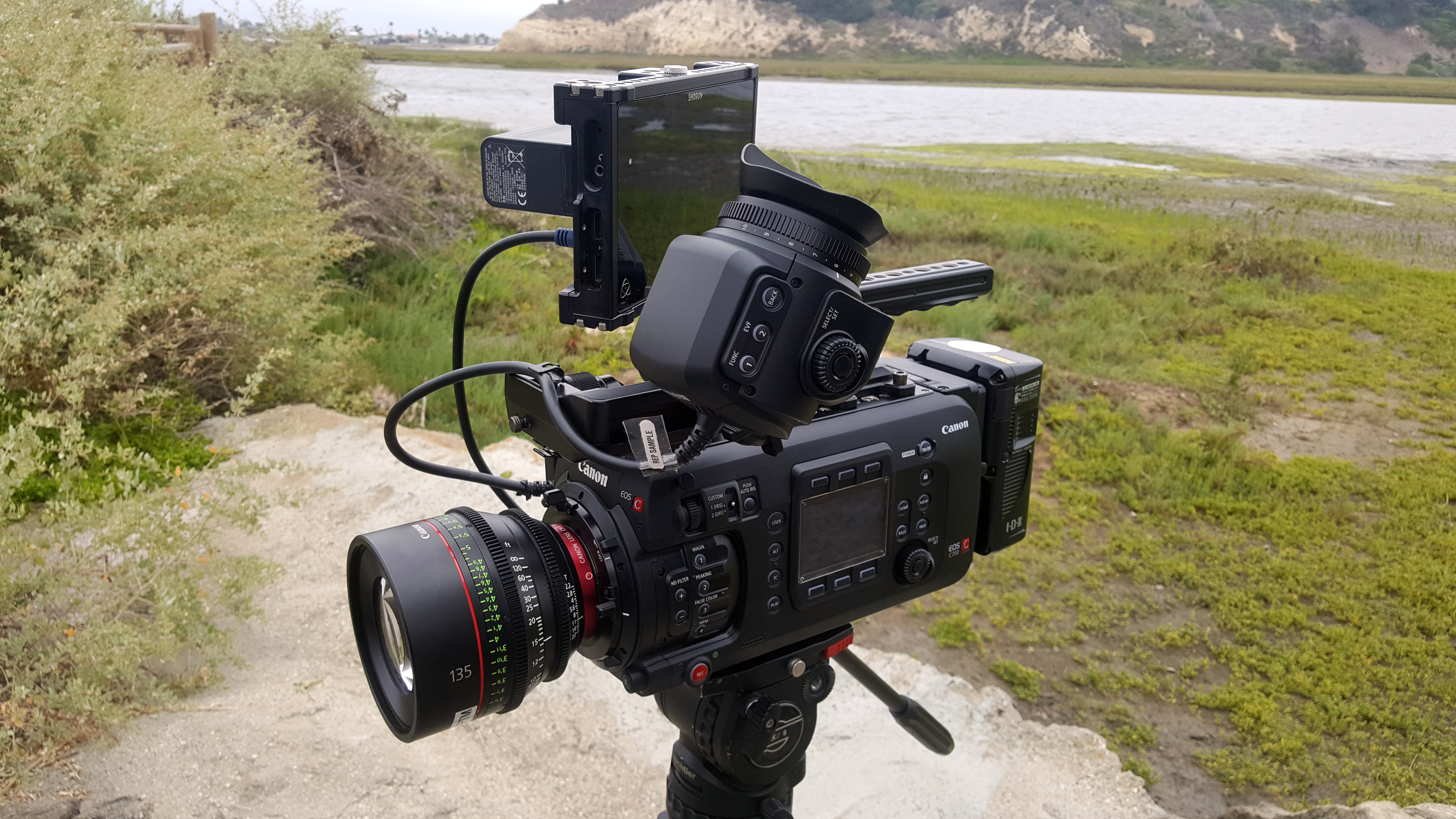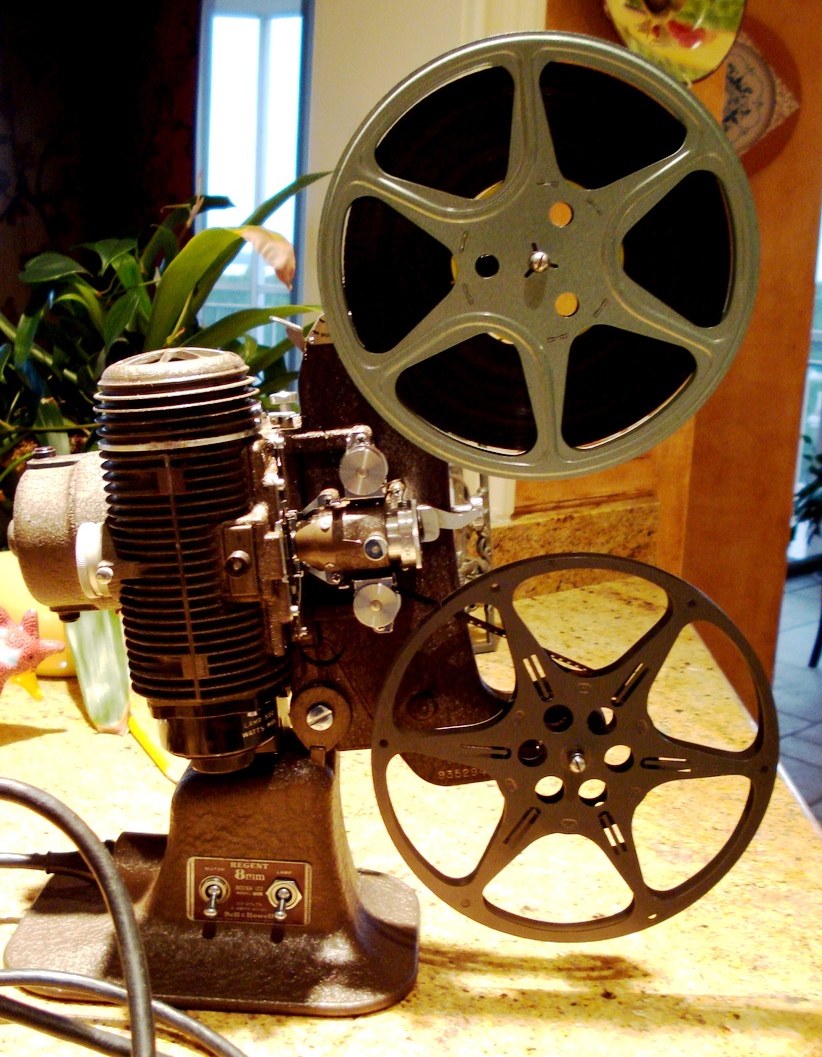|
Eyemo
The Eyemo is a 35mm movie film, 35 mm Movie camera, motion picture film camera which was manufactured by the Bell & Howell Co. of Chicago. Background Designed and first manufactured in 1925, it was for many years the most compact 35 mm motion picture film camera, having a 100-foot film capacity. Its small size and ruggedness made it a favorite choice for newsreel and combat cameramen (it was used throughout World War II and the Vietnam War, the War Department providing special manuals for it), and also found use for fiction and Documentary film, documentary filmmakers whenever a portable, rugged, and inconspicuous camera was needed. The Eyemo is still in use by some filmmakers. It is often used these days as a "crash-cam" for filming dangerous stunts and explosions, and Shot (filming), shots in which the camera must be dropped from a building or other elevation. Construction The Eyemo is a non-reflex camera: viewing while filming is through an optical viewfinder inc ... [...More Info...] [...Related Items...] OR: [Wikipedia] [Google] [Baidu] |
Filmo 127
Filmo is a series of 16 mm and 8 mm movie equipment made by the Bell & Howell Company. The line included cameras, projectors and accessories. History The Filmo camera series started with the 1923 Filmo 70, beginning a series of models built on the same basic body that was to be continued for more than half a century. It was based on Bell & Howell's brilliantly designed 1917 prototype for a 17.5 mm camera intended for amateur use. When invited (along with Victor) into Kodak's 16 mm plans in 1920, the company was quick to see the advantages and immediately set about redesigning the 17.5 mm camera for 16mm film. The Filmo 70 was the first spring motor-driven 16 mm camera. In 1925 the Eyemo, a hand-held 35 mm camera based on the design of the Filmo 70 was offered. It was also spring driven, but could be hand-cranked as well. Bell & Howell introduced the first 16 mm turret camera with its Model C in 1927. A beautifully ornate and much more co ... [...More Info...] [...Related Items...] OR: [Wikipedia] [Google] [Baidu] |
Movie Camera
A movie camera (also known as a film camera and cine-camera) is a type of photographic camera that rapidly takes a sequence of photographs, either on an image sensor or onto film stock, in order to produce a moving image to project onto a movie screen. In contrast to the still camera, which captures a single image at a time, by way of an intermittent mechanism, the movie camera takes a series of images; each image is a ''frame'' of film. The strips of frames are projected through a movie projector at a specific frame rate (number of frames per second) to show a moving picture. When projected at a given frame rate, the persistence of vision allows the eyes and brain of the viewer to merge the separate frames into a continuous moving picture. History An interesting forerunner to the movie camera was the machine invented by Francis Ronalds at the Kew Observatory in 1845. A photosensitive surface was drawn slowly past the aperture diaphragm of the camera by a clockwork mechanism to ... [...More Info...] [...Related Items...] OR: [Wikipedia] [Google] [Baidu] |
Bell & Howell
Bell and Howell LLC is a U.S.-based services organization and former manufacturer of cameras, lenses, and motion picture machinery, founded in 1907 by two projectionists, and originally headquartered in Wheeling, Illinois. The company is now headquartered in Durham, North Carolina, and currently sells production mail equipment, buy-online-pickup-in-store (BOPIS) smart locker and kiosk solutions, and provides maintenance services for automated, industrial equipment in enterprise-level companies. Since 2010, the Bell + Howell brand name has been extensively licensed for a diverse range of consumer electronics products. History According to its charter, the Bell & Howell Company was incorporated on February 17, 1907. It was duly recorded in the Cook County Record Book eight days later. The first meeting of stockholders took place in the office of Attorney W. G. Strong on February 19 at 10 a.m. (10:00 CT). The first board of directors was chosen for a term of one year: Donal ... [...More Info...] [...Related Items...] OR: [Wikipedia] [Google] [Baidu] |
Bell & Howell Eyemo Camera
A bell is a directly struck idiophone percussion instrument. Most bells have the shape of a hollow cup that when struck vibrates in a single strong strike tone, with its sides forming an efficient resonator. The strike may be made by an internal "clapper" or "uvula", an external hammer, or—in small bells—by a small loose sphere enclosed within the body of the bell (jingle bell). Bells are usually cast from bell metal (a type of bronze) for its resonant properties, but can also be made from other hard materials. This depends on the function. Some small bells such as ornamental bells or cowbells can be made from cast or pressed metal, glass or ceramic, but large bells such as a church, clock and tower bells are normally cast from bell metal. Bells intended to be heard over a wide area can range from a single bell hung in a turret or bell-gable, to a musical ensemble such as an English ring of bells, a carillon or a Russian zvon which are tuned to a common scale and installe ... [...More Info...] [...Related Items...] OR: [Wikipedia] [Google] [Baidu] |
Direct Current
Direct current (DC) is one-directional flow of electric charge. An electrochemical cell is a prime example of DC power. Direct current may flow through a conductor such as a wire, but can also flow through semiconductors, insulators, or even through a vacuum as in electron or ion beams. The electric current flows in a constant direction, distinguishing it from alternating current (AC). A term formerly used for this type of current was galvanic current. The abbreviations ''AC'' and ''DC'' are often used to mean simply ''alternating'' and ''direct'', as when they modify '' current'' or '' voltage''. Direct current may be converted from an alternating current supply by use of a rectifier, which contains electronic elements (usually) or electromechanical elements (historically) that allow current to flow only in one direction. Direct current may be converted into alternating current via an inverter. Direct current has many uses, from the charging of batteries to large po ... [...More Info...] [...Related Items...] OR: [Wikipedia] [Google] [Baidu] |
Battery (electricity)
An electric battery is a source of electric power consisting of one or more electrochemical cells with external connections for powering electrical devices. When a battery is supplying power, its positive terminal is the cathode and its negative terminal is the anode. The terminal marked negative is the source of electrons that will flow through an external electric circuit to the positive terminal. When a battery is connected to an external electric load, a redox reaction converts high-energy reactants to lower-energy products, and the free-energy difference is delivered to the external circuit as electrical energy. Historically the term "battery" specifically referred to a device composed of multiple cells; however, the usage has evolved to include devices composed of a single cell. Primary (single-use or "disposable") batteries are used once and discarded, as the electrode materials are irreversibly changed during discharge; a common example is the alkaline battery us ... [...More Info...] [...Related Items...] OR: [Wikipedia] [Google] [Baidu] |
Alternating Current
Alternating current (AC) is an electric current which periodically reverses direction and changes its magnitude continuously with time in contrast to direct current (DC) which flows only in one direction. Alternating current is the form in which electric power is delivered to businesses and residences, and it is the form of electrical energy that consumers typically use when they plug kitchen appliances, televisions, fans and electric lamps into a wall socket. A common source of DC power is a battery cell in a flashlight. The abbreviations ''AC'' and ''DC'' are often used to mean simply ''alternating'' and ''direct'', as when they modify '' current'' or ''voltage''. The usual waveform of alternating current in most electric power circuits is a sine wave, whose positive half-period corresponds with positive direction of the current and vice versa. In certain applications, like guitar amplifiers, different waveforms are used, such as triangular waves or square waves. Audio ... [...More Info...] [...Related Items...] OR: [Wikipedia] [Google] [Baidu] |
Tripod (photography)
In photography, a tripod is a portable device used to support, stabilize and elevate a camera, a flash unit, or other videographic or observational/measuring equipment. All photographic tripods have three legs and a mounting head to couple with a camera. The mounting head usually includes a thumbscrew that mates to a female-threaded receptacle on the camera, as well as a mechanism to be able to rotate and tilt the camera when it is mounted on the tripod. Tripod legs are usually made to telescope, in order to save space when not in use. Tripods are usually made from aluminum, carbon fiber, steel, wood or plastic. Usage Tripods are used for both still and motion photography to prevent camera movement. They are necessary when slow-speed exposures are being made, or when lenses of extreme focal length are used, as any camera movement while the shutter is open will produce a blurred image. In the same vein, they reduce camera shake, and thus are instrumental in achieving max ... [...More Info...] [...Related Items...] OR: [Wikipedia] [Google] [Baidu] |
Film Stock
Film stock is an analog medium that is used for recording motion pictures or animation. It is recorded on by a movie camera, developed, edited, and projected onto a screen using a movie projector. It is a strip or sheet of transparent plastic film base coated on one side with a gelatin emulsion containing microscopically small light-sensitive silver halide crystals. The sizes and other characteristics of the crystals determine the sensitivity, contrast and resolution of the film.Karlheinz Keller et al. "Photography" in Ullmann's Encyclopedia of Industrial Chemistry, 2005, Wiley-VCH, Weinheim. The emulsion will gradually darken if left exposed to light, but the process is too slow and incomplete to be of any practical use. Instead, a very short exposure to the image formed by a camera lens is used to produce only a very slight chemical change, proportional to the amount of light absorbed by each crystal. This creates an invisible latent image in the emulsion, wh ... [...More Info...] [...Related Items...] OR: [Wikipedia] [Google] [Baidu] |







